by Jops Josef
I think any birder-GoT fan would agree with me that ‘Warden of the North’ would be a fitting moniker for Richard Ruiz. Just like Jon Snow, Richard watches his patch for ‘invaders’ coming from ‘north of the wall’. But unlike the White Walkers that Jon is preventing from entering the northern territory of Westeros, Richard gladly welcomes his version of invaders to his hometown of Laoag.
Since 2008, Richard has been considered by local birders as the main man up north – not because of the one new-country record under his belt, but because of the numerous records of rare migrants he regularly reports (read: https://ebonph.wordpress.com/2014/05/01/birder-profile-richard-ruiz/).
His recent posts of rare migrants on fb-WBCP prompted our group to make the trip up north; of course with hopes of ticking some of the rarities, but mainly to experience what it’s like to bird Laoag’s patches with Richard himself guiding us.
Day 1 – Saturday, Jan 18
Brgy. La Paz – The Start of Our Northern Adventure.
We met Richard at Jollibee at 0530 for breakfast, while we waited for Allan and Cheta to arrive from their bus ride from Manila (yup, straight to birding after a 9-hour bus trip!). After breakfast, we boarded the car and headed for the first site – Brgy. La Paz. No doubt excitement was building up among the visiting birders as we headed to where Richard regularly sees the Yellow Bunting.
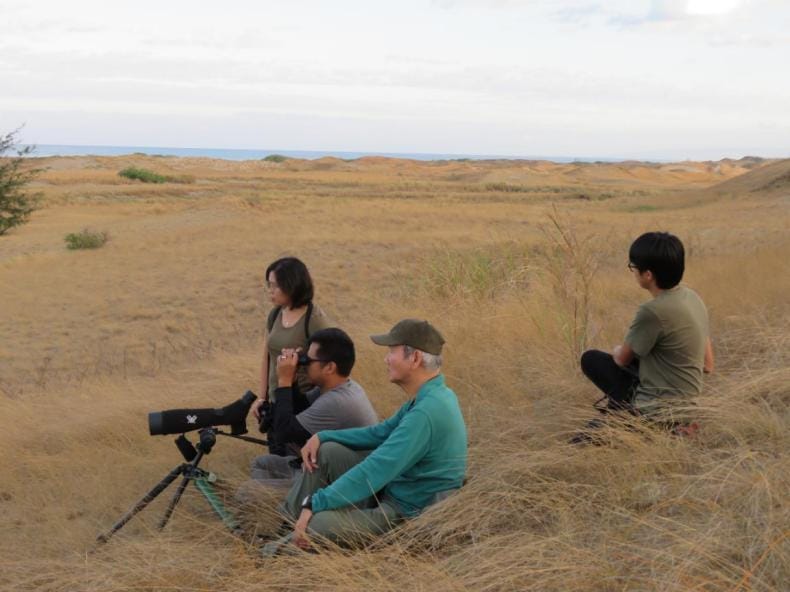
I remember what Richard told me last year when I went up to look for the Spotted Imperial Pigeon, “We have to be there before 6AM because we only have the chance to see them from 6-8AM”. For the bunting, it was no different, as we had the same window. After that, chances would be slimmer as Richard has observed them to hide in the thickets of aroma because of the heat.
An hour passed and we had no bunting in sight, but we were happy listening to Richard’s stories and checking out everything that flew or moved in our sights. At one point, us Laoag-birding newbies approached the thicket in front of us to check out what we thought to be the bunting calling, only to be told by Richard that we were standing too close and probably scaring the bunting away. True enough, within minutes after stepping back to our original spot, Allan spotted 2 Yellow Buntings foraging on the ground like Eurasian Tree Sparrows (as how Richard described how they might look: slender ETS’s with a tinge of yellow:)). Stunned at the chance-spotting, Allan’s attempt to point out our targets to us came a bit too late, and the two flew out again.
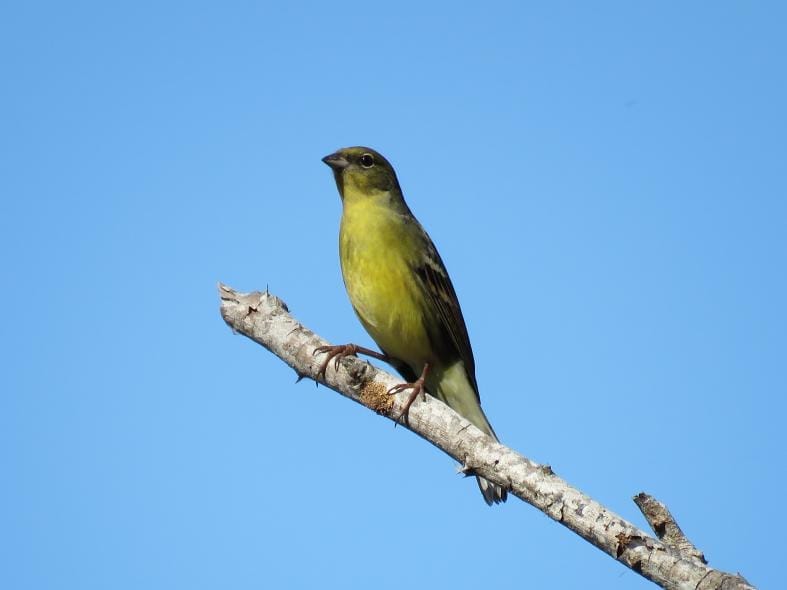
There was a bit of pressure mounting after that, as it was already 7:37AM. I think each of us was silently worried if 23 minutes would be enough to spot the buntings again. Luckily (at least for three of us :)), Cheta wandered off to look for them where they were last spotted and flushed them towards the thicket in front of us. Bunting checked for us, but how about Cheta? We immediately glanced back at Cheta to check if he got it as well. What we saw was enough visual confirmation that he did – jumping with one hand punching the air, the other holding his bins barely away from his face.
After high fives and handshakes were exchanged, Richard told us that we should get going to the next site.
Gabu Fishponds – An Unxpected (mega)Lifer.
It was a short 20-minute drive to Gabu Sur. After getting permission from the caretaker, we made our way to the fishponds. Somehow we knew that we were in a for a surprise the way Richard quickly scanned each pond and motioned for our group to head on to the next despite all the bird activity around us. Even more than a hundred Philippine Ducks in the second pond did not warrant a proper count, BUT a brief appearance of the Yellow Bunting made us scamper and stop.
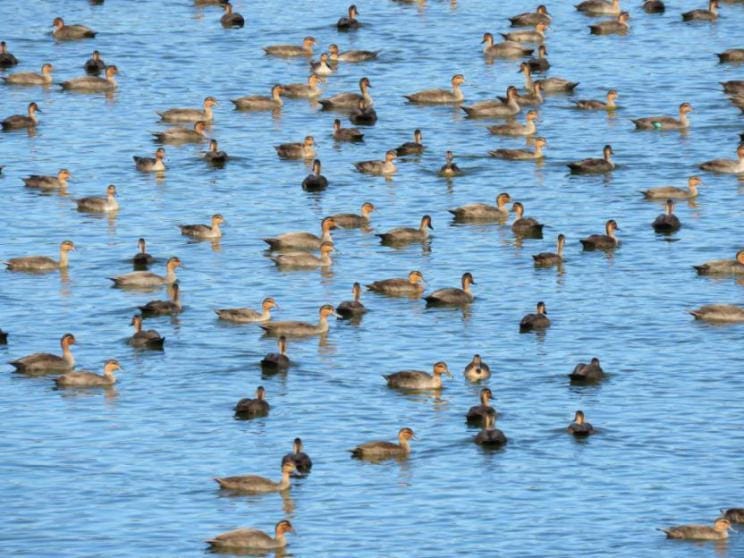
We soon learned why though. At the last pond where the remains of an old house served as a proper hide, was the congregation of ducks Richard was hoping we’d see. Majority were Philippine Ducks (approximately 900), Richard’s keen eyes spotted the first migratory duck species for the group: a male Eurasian Wigeon with some females. This was followed by Garganeys, Northern Shovelers, and Green-winged Teals. The group’s main target however, the rare Spot-billed Duck seen by Richard a few days ago, remained elusive.
To cut to the chase, the Spot-billed Duck was a no-show that morning. But it was replaced by the biggest surprise coming from the most novice birder of our group, April. While on her turn scanning with the scope, she called my attention to ID what she spotted. At first it looked like a Garganey, but it was the big white spots at the base of the bill on each side that threw me off. I called Richard to have a look. Richard quickly exclaimed that that was new to him and asked us to take a picture. Having no idea where to start ID’ing the species, we decided to dial-an-ID, and sent a screenshot of Cheta’s video to fb-WBCP and WhatsApp. The reply that we got from Rob made us exchange high-fives again…
“Good candidates for Greater Scaup and female Baikal Teal in Laoag…”

Megalifer: female Baikal Teal 
Megalifer-NOT, possible Tufted x Scaup hybrid
We quickly searched for a picture of the female Baikal Teal, and indeed the two white spots on the base of the bill were characteristic of the species (not that we doubted Rob, but we just had to confirm haha)
We stayed for another hour hoping for the Spot-billed Duck to show itself before moving on to Paoay Lake. During the wait, the resident subspecies of the Peregrine Falcon (ssp erenesti) perched on one of the trees lining the third pond, allowing us to marvel at its beauty and photograph it to our hearts content. Our main target did not show up, but we were happy with our lifers, with April and Cheta racking up the most.
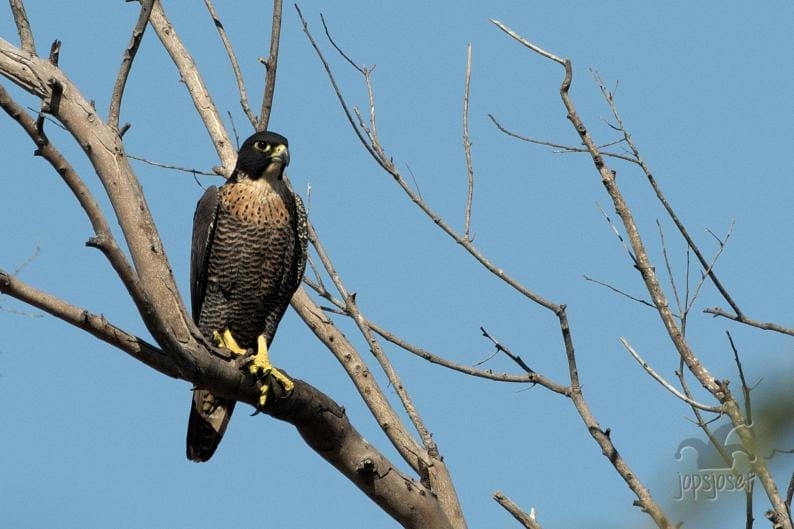
Note: Greater Scaup was not included in the bird list as ID is still being confirmed, with the possibility of it being a hybrid Tufted x Scaup.
Paoay Lake – Quick Draw Lifer.
The sun was beating down hard on Paoay Lake when we got there, but Richard had planned to visit the site before having lunch, as our target, if it was there, didn’t mind the heat and was known to bask in it.
Again it was April who spotted our target for the group as soon as we hit the road along the banks of the lake, by nonchalantly asking out loud, “Ano yung malaking ibon na naka-perch sa stick?”. It was, of course, the Great Cormorant that we were after! We were caught by surprise by how quick we were able spot it, more so Richard, who has never seen it perch this close to the shore. The next few minutes were spent taking photographs and scanning the lake as far as our eyes would allow. And with that lifer, we ended the morning session.
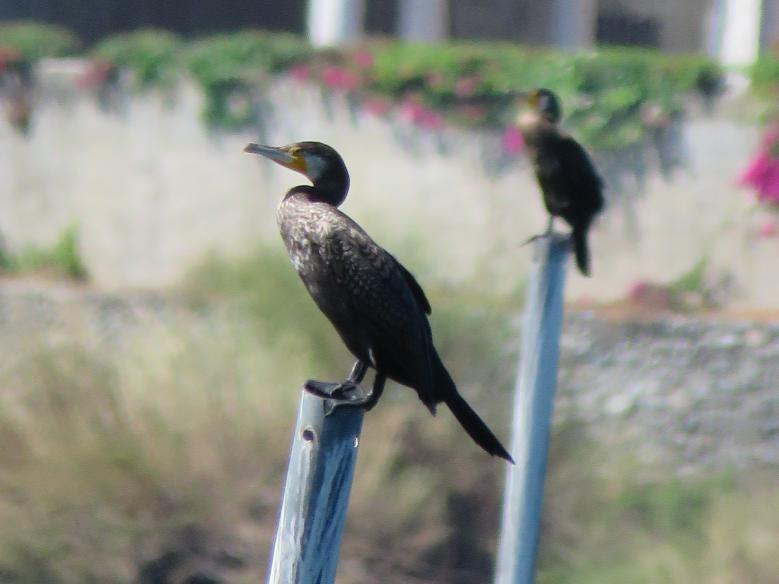
Banks of Laoag River – A Treat for the Senses
We picked up Richard at 3PM and headed for our fourth site that day. From the dike road, we could see very little activity as temperatures were still high. Surprisingly though, we saw 3 raptors – an Osprey and two Peregrine Falcons on an island carved out by the flows of the river, along with some Grey Herons and Great Egrets.
Moving down to the bank itself, we saw the next lifer for April and Cheta: two White Wagtails at the bank nearest us. Activity picked up in the late afternoon as Richard had said, with the coming of waders. We were hoping that one of them would be a Green Sandpiper, as this was the site where Richard saw them before. However, the flock that came in were all Kentish Plovers.
We were also on the lookout for the Red-billed Starling that Richard saw only a couple of days before. However, the suspected individuals that we saw perched on the far-away Agoho tree were too backlighted and were soon chased away by the Crested Mynas before we were able to confirm the ID. Attention then shifted to the nearer fruiting Camachile tree. There were definitely starlings there, but not the ones that would be lifers for the four of us – instead we saw White-shouldered Starlings with the distinct white patches on the wing coverts.

With the sun nearly setting, we moved back up to dike road to wait for Savanna Nightjars. As we were nearing the spot where Richard told us we would stop, I played one call out. We were startled to hear one call back from the slope on our immediate left. We pulled to a stop and as we got out, the individual to our side took flight, where it was soon joined by three more individuals. And that was how we ended our day’s birding, enjoying the cool night temperature by the river in the dark, while being amazed by the melodious high-pitched two-tone calls and swooping flights of the nightjars.
Day 2 – Sunday, January 19
Banks of Laoag River – Beating Around the Scrub.
As suggested by Richard, the group decided to go back to the Laoag River banks to photograph roosting Savanna Nightjars. We were at the site before sunrise in order to see the general roosting area. As soon as the activity died down, we walked towards the scrub area where we thought it would be easy pickings to spot them. However, we soon learned that no matter how quiet and careful we walked, and no matter how hard we looked, the nightjars were perfectly camouflaged against the scrub – with most individuals flushed being a few meters away.
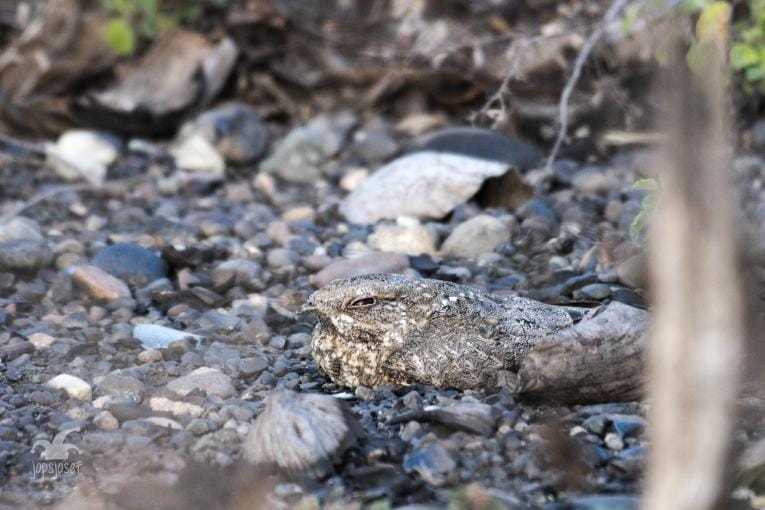
We were also hoping that some Red-billed Starlings would show that morning, but instead got a flock of 30 or more White-shouldered Starlings zooming between where Cheta and I were standing.
Gabu Fishponds and Paoay Lake – Last Minute Lifer.
We revisited the Gabu Fishponds and Paoay Lake again to check for the Spot-billed Duck after the exciting experience with the nightjars. During the walk to the ponds, Richard’s keen eyes spotted a peculiar shape perched on top of the farthest leafless tree. Richard knew immediately what it was once he got his bins focused on the bird – it was a Eurasian Kestrel, another lifer for our group.

It was less bird-y around the ponds that morning, with an estimate number of 300+ ducks counted – a far cry from the number we witnessed the day before. The Spot-billed Duck was again a no-show, the Baikal Teal and Tufted x Scaup hybrid was also nowhere to be seen. For that reason, we were thankful we chanced upon the big number and amazing lifers during the first day.
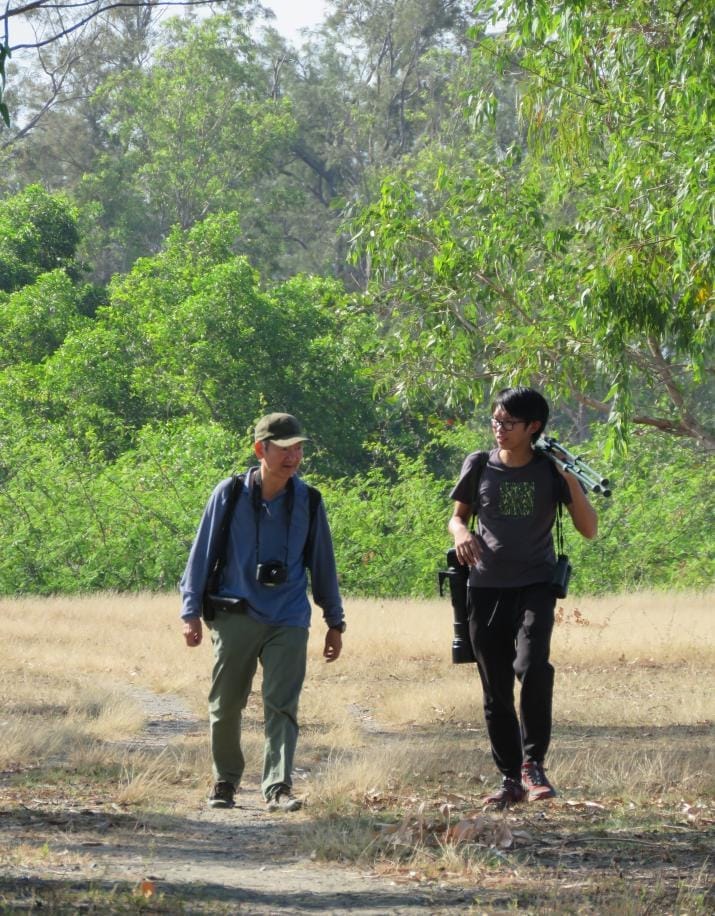
We then headed to Paoay Lake for the last chance of the trip to spot it. This time we went to the opposite bank where we saw the Cormorants, after seeing some ducks in that area from the Paoay View Deck. Despite all our efforts, we had to accept that the Spot-billed Duck would have to wait another day, as we were only able to spot a group of Tufted Ducks, Philippine Ducks, and a couple of Grebes.
After a hearty lunch at our now-favorite lunch place (Comedor ni Rafael, ate there twice, highly recommended, really good authentic Ilocano dishes), we bade Richard farewell, and thanked him greatly for his time. It was truly a great adventure for us bird-wise (and lifer-wise, no shame in saying this!) Laoag held up to its reputation as a birding destination full of surprises. But more than that, to be able to bird with Richard in his local patches and witness firsthand the skills, knowledge, and mastery he has built throughout the years about the areas and recorded species was an experience in itself.
To end the story about our adventure up north, another show reference comes to mind – this time it’s a line from a movie about a rat who can cook, “We will be returning to Laoag soon, hungry for more.”
eBird Checklists:
https://ebird.org/checklist/S63502969
https://ebird.org/checklist/S63503173
https://ebird.org/checklist/S63503281
https://ebird.org/checklist/S63503385
https://ebird.org/checklist/S63757131
https://ebird.org/checklist/S63537134
Photo credits: Allan Fernando – Waiting for the Yellow Bunting, Yellow Bunting, Phillppine Ducks at Gabu Fishponds, Great Cormorant, Eurasian Kestrel and Jedi Richard and Padawan Cheta; Cheta Chua – female Baikal Teal and possible Tufted x Scaup hybrid (digiscoped); Jops Josef – Peregrine Falcon and Savanna Nightjar; April Lim-Josef – Richard and the Laoag-birding newbies at the banks of Laoag River.


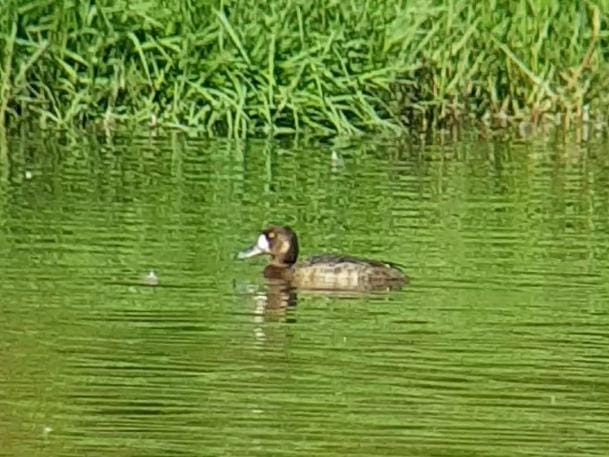
love this article!
Thank you! We’re just replying now because we were flooded with spam! 😛